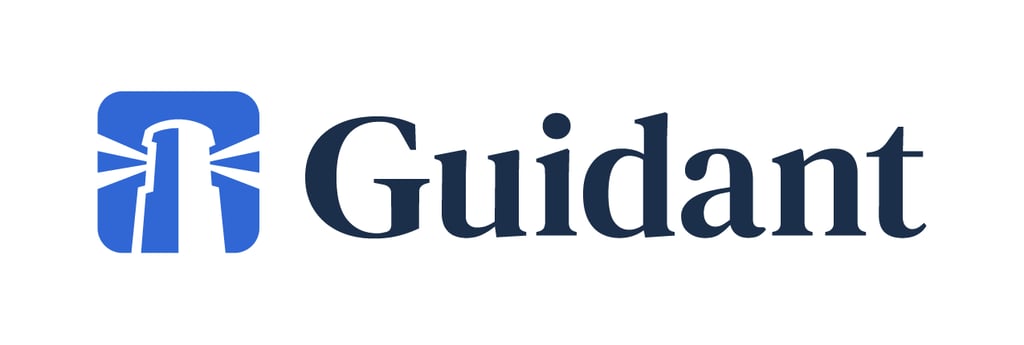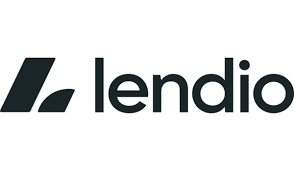Financing is a core tool for getting a restaurant running or expanding an operation. There are different ways to finance a restaurant, but the best option for you will depend on the features of your business, your funding goals, and your business’s or management’s financial standing.
Knowing the different small business loans for restaurants at your disposal will better allow you to make the best decision and find the loan option with the best payback terms and timelines.
Review my list of the best restaurant loans and their terms in 2025.

Get expert support on your next restaurant venture with Guidant Financial
Looking to find the best financing option for your restaurant? The team at Guidant Financial can help assess your financial needs and guide you to the best choice. Their team can help you find the best rates with the best lenders. Reach out to them today to determine the best restaurant loan option that fits your goals!
Types of small business loans for restaurants compared
| Est. starting rates | Max. loan term | Min. credit score | Best restaurant loan for | ||
| SBA 7(a) business loans | Variable: 6%-10% Fixed: 12.5%-15.5% | Working capital: 10 years Real estate: 25 years | 650-690+ | Established full-service restaurants, multi-location operators, franchisees, and restaurants in need of real estate | |
| Business line of credit | 8%-12% (Bank LOC) or 15%-40% (Online lenders) | Revolving credit, 12-24 month draw periods | 600-680+ | Seasonal restaurants, restaurants with changing expenses, small full-service or fast-casual restaurants, and new concepts | |
| Equipment financing loan | 6%-20% | 3-7 years | 600-650+ | Pizzerias, bakeries, cafes, expanding restaurants, specialty kitchens | |
| Short- and long-term loans | 8%-30% or 6%-15% | 3-18 months or 3-10 years | 600-650+ | Emergency cash flow needs, expansion, remodeling, or debt refinancing | |
| Merchant cash advances | Factor rates: 1.1-1.5(equivalent to 40%-100%) | 3-18 months | 500-550 | Quick-service or fast casual, owners who can’t qualify for traditional loans; extremely urgent cash needs | |
| Collateral loan | 6%-12% | 3-7 years (equipment) or 25 years (real estate) | 620+ | Restaurants that own their property, established restaurants, and family-owned or multi-unit restaurants | |
| Unsecured loan | 9%-35% | 1- 5 years | 650+ | Established restaurants with strong revenue, expanding businesses, and risk-averse operators | |
SBA 7(a) loan: Best for established restaurants or franchisees
Pros
Cons
Business line of credit: Best for smaller restaurants
Pros
Cons
Equipment financing loans: Best for equipment purchases
Pros
Cons

Get funding in three simple steps with Lendio
With over 75 loan servicers in its network, Lendio can help you get funding in minutes. Share your vision and loan needs with the Lendio team, compare your options, and get funding. Lendio makes it that easy.
Short- or long-term business loans: Best for emergency cash flow, expansions, and debt refinancing
Pros
Cons
Merchant cash advance (MCA): Best for emergency cash situations
Pros
Cons
Collateral loan: Best for restaurants with assets
Pros
Cons
Unsecured loan: Best for risk-averse operators with good credit
Pros
Cons
What are restaurant business loans for?
Restaurants are very fluid businesses, and the financial situation of a food business can turn on a dime. There are several reasons why a restaurant may consider a business loan, as capital to grow a restaurant is often the most common way it’s achieved. Below are some of the main reasons why restaurant financing options may be considered for a business.
Equipment purchases and upgrades
Equipment in restaurants can break down, become outdated, and impact the efficiency of your kitchen. Small business loans for restaurant equipment are crucial to many operators as these allow them to purchase a new oven, grill, or point-of-sale (POS) system.
New software and restaurant technology are very popular purchases in this regard, as new systems often help restaurants tremendously. The ROI of these loans involves improved business efficiencies and enhanced customer experiences with the purchased equipment.
Renovations or build-outs
Restaurants need to renovate both kitchens and dining rooms to stay modern and properly serve their customers. Owners often take out loans to rebuild a kitchen, renovate a dining room, or expand an existing restaurant to accommodate more customers. These loans help boost customer capacity and generate more revenue.
Inventory and bulk ingredient purchases
Loans for inventory and bulk ingredient purchases help restaurants make larger purchases of key ingredients to save money. Concepts such as seasonal restaurants rely heavily on these big purchases as they curb vendor prices. This also helps build relationships with vendors, who often prefer larger orders.
Hiring and payroll
The cost to onboard chefs, cooks, and waitstaff is high. Some restaurants will take out a loan to cover these costs if the hiring need is that large. This initial loan can help cover the costs of training, uniforms, and other expenses associated with hiring a larger group of people.
Marketing and advertising
Effective marketing and advertising can have a significant impact on the sales of your business. Some restaurant operators will take out loans to run campaigns and further reach their target audience. By taking out this loan, operators have adequate capital to launch a new product or marketing campaign better.
Expansion
Owners often take out loans to expand a restaurant. They can use this borrowed money to fund a second location, invest in a new market with a food truck, or expand existing restaurants to serve different customers or offer different menus. Expanding a restaurant is expensive, and different loans help carry the burden of this cost.
Alternatives to traditional restaurant financing options
401(k) business financing allows you to use retirement funds for your business. You can do this with a process called Rollover as Business Startups (ROBS). Under this, funds are rolled into a 401(k), and the new plan buys stock in your business. This then provides cash, which you can use to help pay for key business expenses. This process is very complex legally, but you skip paying interest on the “loan”.
ProsNo debt interest paymentsNo credit score neededHelps with SBA 7(a) eligibilityConsComplex legal processRisks your retirement savingsAnnual maintenance and setup fees can be high
Grants are non-repayable funds offered by government entities, which are often awarded to small businesses or underrepresented business owner communities. The applications for these grants are competitive and typically have goals attached, such as job creation, community development, and support for underserved communities.
ProsFree money without the need for repaymentBoosts cash flow for businessesSupports missions you believe inConsExtremely competitiveVery slow approval with heavy documentation requiredOne-time funding, limited targeted eligibility
Crowdfunding raises capital through community support. This relies on small contributions from independent donors and is done through online platforms. The more support you receive, the more it validates your business and ensures genuine interest in your product.
Pros
- Validates your concept
- No debt required
- Access to a wide, loyal customer base
Cons
- No guarantee that the funding amount will be met
- Takes a lot of time and marketing
- Need to deliver on promises
Investment funding relies on raising capital by offering a share of ownership in your business (similar to the popular show Shark Tank). These funds come from angel investors, venture capitalists, private equity groups, and strategic hospitality groups. Investment funding is often reliable, as investors are backed with immense capital and a will to see a return on their investment. The downside is giving up an ownership stake in your business to receive funding.
Pros
- Strategic mentorship and experience from the investors
- Helps accelerate growth
- Funding amounts are often large and significantly helpful
Cons
- Loss of ownership stake
- Shared business decision-making
- Long-term planning for the business is required
How to choose the right loan for your restaurant
Given the many restaurant financing options above, it can be daunting to figure out which loan is best for you. Let’s take a look at the considerations when choosing the best loans for your restaurant:
- Loan amount needed: The amount of capital you need will determine the type of loan you need. It’s important to both not overborrow or underfund, as both could lead to large financial burdens. Being realistic with lenders and knowing your target costs are vital to success.
- Repayment terms and flexibility: You, as an owner, need to determine if you need lower interest rates or if you can manage quicker access to capital with higher rates. Being aware of what interest you can afford and how long you can reasonably pay off the amount borrowed is very important.
- Interest rates: Knowing how rates affect your overall cost is important. Some loans may be super quick to fund, but will bury you in interest that you cannot pay back. Choosing a loan with a fair interest rate will help you better manage repayment.
- Consider the lender’s reputation: The type of lender you choose and their reputation are important considerations. Reputable lenders will have a clean track record, a good Better Business Bureau (BBB) rating, and industry experience within the food industry. Lenders should also have tight and organized standards for all potential borrowers.
- Your financial profile: The personal credit you have will determine a lot of your loan eligibility. Alternatively, the financial strength or potential strength of your business will also dictate which loans you are able to utilize. All of this is key when determining the best loan for you.
How to get a restaurant loan
Obtaining a restaurant loan can be complex, as it typically requires meticulous planning and extensive documentation. Still, it’s important to understand the process to secure funding. Here are the steps you’ll likely go through when applying for a restaurant loan.
Step 1: Determine your funding needs
The first step in any loan process is determining your restaurant’s funding needs and how you will utilize the funds. Clearly outlining the capital required for a renovation, expansion, or build-out will better serve the case as to why you qualify for a loan.
Step 2: Review your financial health
It’s important to understand your credit score and be able to articulate it. You will also need to prepare recent bank statements, P&Ls, tax returns, and other financial records for lenders. Make sure you know your monthly cash flow and debt obligations, as these are crucial to the review process.
Step 3: Choose the best loan for your restaurant and compare lenders
Choosing the right loan makes all the difference in restaurant financing. For example, an SBA loan can be used for low-cost funding on a long-term project, while an unsecured loan is great for quicker capital without collateral, if you have the right financial profile.
Picking the right loan plays to your financial strengths, while ensuring the project goal of the loan is executed correctly. Comparing lenders of the loan type you decide on will help you find a reputable source of funding.
Step 4: Submit your application
The application process for your loan will require you to gather the required documentation to show why you are a good candidate. You need to work with your lender on providing all of the requested documentation for a positive review. Once you apply, you will have to wait for the lender to approve your loan.
Step 5: Review and accept loan offers
Many lenders may send you different loan offers based on your credit and your business’s financial health. Pick the loan that best serves your goals and ensure it’s one that you can pay back on time.
Step 6: Use funds responsibly and pay your loan back on time
Once you secure funding, be sure to use it for your intended goal. This is usually legally required, so be smart and honest with the capital you have borrowed. Keep detailed records of how you use your funds, and pay on time to maintain a good standing with your lenders.
Last bite
Choosing the right restaurant financing and business loan for your restaurant takes time, focus, and an understanding of the loans you can apply for. The loans in this article demonstrate the diversity of the financing process.
Whichever you choose, make sure that it helps you achieve your business goals, and it’s affordable and manageable for your business to pay back. Ultimately, the best restaurant financing option is the one that helps you grow without sinking your business into large amounts of debt.



